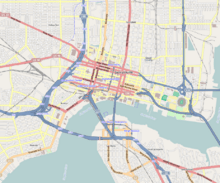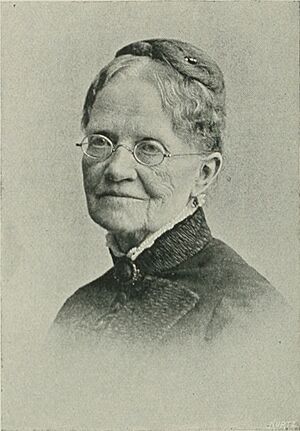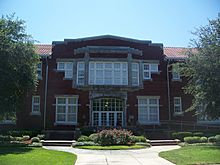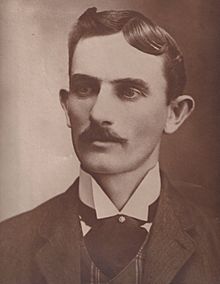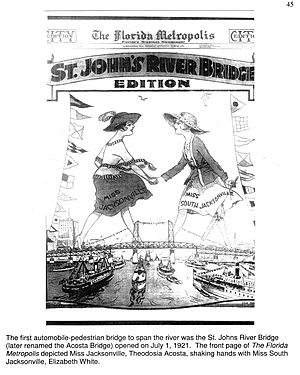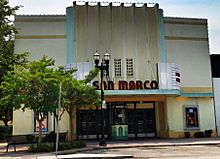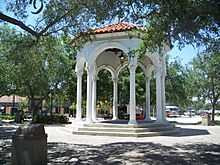San Marco (Jacksonville) facts for kids
Quick facts for kids
San Marco
|
|
|---|---|
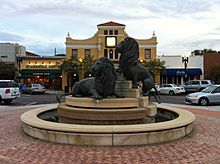
Lion statues in San Marco Square
|
|
| ZIP Code |
32207
|
| Area code(s) | 904 |
San Marco is a cool neighborhood in Jacksonville, Florida. It's located just south of Downtown, right across the St. Johns River. This area used to be its own independent city called South Jacksonville until 1932, when it became part of Jacksonville. San Marco is mostly a place where people live, but it also has a busy shopping and dining area known as San Marco Square.
The community of South Jacksonville started growing after the American Civil War. It officially became a city in 1907. The area really started to boom after the Acosta Bridge was finished in 1921. This bridge connected the neighborhood directly to Downtown Jacksonville. During this time, the original San Marco development was built, which eventually gave its name to the whole area. Since the 1990s, San Marco has seen many projects to protect its history and build new things. It has fourteen city parks, several schools, and other fun places.
Contents
Where is San Marco Located?
The name "San Marco" first referred to just one part of South Jacksonville. But now, it's used for most of the old city's land. This land is south and east of the St. Johns River, across from downtown Jacksonville. The neighborhood's exact borders aren't official and have changed over time. The San Marco Preservation Society uses these boundaries: Interstate 95 to the north, Philips Highway to the east, Greenridge Road to the south, and the St. Johns River to the west.
The area along the riverbank north of I-95 is called the Southbank. It used to be part of San Marco. However, in the 1980s, it became part of Downtown Jacksonville's business area. Important smaller neighborhoods within San Marco include Colonial Manor and South Riverside. The St. Nicholas neighborhood is right next to San Marco on its east side.
San Marco's Past: A Look Back
Early Days and Plantations
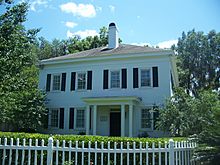
People started living permanently on this part of the St. Johns River during Florida's British period. Around 1760, officials set up a ferry crossing at the Cow Ford. The ferry docked on the river's south bank. This area was settled long before what is now downtown Jacksonville. When Spain took control of Florida again in 1783, they built Fort San Nicolas near the ferry landing. This fort is in today's St. Nicholas neighborhood.
In 1793, the Spanish government gave land for a large farm. Isaac Hendricks later took over this farm. By 1850, Hendricks had married Elizabeth Hudnall, who owned a big piece of land next door. His daughter Margaret married Albert Gallatin Philips, who owned the nearby Red Bank Plantation. Because of these family connections, many families in the area were related and owned a lot of land.
After the American Civil War, these large farms were divided into smaller plots for homes. In 1873, Elizabeth Hendricks sold the eastern part of her land to Florida governor Harrison Reed. He moved there and started the first South Jacksonville development. In 1882, Hendricks developed the western part of her land, calling it "Oklahoma." South of Oklahoma, Harrison Reed's sister, Martha Reed Mitchell, and her husband Alexander built a huge winter home called Alexandria. Martha Mitchell became very important in Jacksonville society. She was involved in many charities and good causes. By 1900, these developments had grown into a community generally known as "South Jacksonville."
South Jacksonville Becomes a City
People promoted South Jacksonville as a suburb of Jacksonville. However, getting to Jacksonville across the river was only possible by ferry. After the FEC Railway Bridge was finished in 1890, several train lines served South Jacksonville. This helped the area grow a lot. By 1907, South Jacksonville was a major transportation spot with about 600 people. Even so, it still didn't have paved streets, sidewalks, or electric lights.
Led by businessman John Fletcher White and the Hendricks and Philips families, residents voted to officially make the town a city. S. M. Scruggs was chosen as its first mayor. Six months later, White won the first election against him.
The town grew quickly in the next few years. A bank, a public school, a city hall, and several large businesses were built. There were also amusement parks at what is now Treaty Oak Park. In 1910, Atlantic Boulevard opened, connecting South Jacksonville to the Jacksonville Beaches. This made South Jacksonville even more important for cars and ferries. By 1917, the town's population was ten times what it was when it became a city. Because of this growth, local leaders planned the first Acosta Bridge. This bridge would connect Jacksonville and South Jacksonville by road for the first time.
The Acosta Bridge opened in 1921. It brought a new wave of building in South Jacksonville. New neighborhoods were planned in Oklahoma and Villa Alexandria. These included South Shores, Alexandria Place, River Oaks, and the original San Marco development. The old Red Bank plantation became South Riverside and Colonial Manor. The Red Bank Plantation House, built in 1857, became a home in the Colonial Manor neighborhood. It is Jacksonville's second oldest house still in use. The bridge also boosted the economy in South Jacksonville. However, it greatly reduced ferry business, which completely disappeared within twenty years.
The San Marco Development
The San Marco development, which eventually gave its name to the whole area, started in 1925. It was the city's most ambitious building project. It was built on 80 acres of the old Villa Alexandria estate. This estate had fallen into disrepair after Martha Reed Mitchell passed away in 1902. The developer was Telfair Stockton, who had also created the fancy Avondale neighborhood across the river.
San Marco was designed to be a stylish, upscale neighborhood, keeping the good reputation of Villa Alexandria. It had 250 lots for homes and a commercial area. It was very successful from the start. It broke local records by selling every lot within three hours of going on sale, even though not much building had begun yet.
Construction on the first buildings began in 1926. San Marco was originally planned in the Italian Renaissance revival style. This style influenced the name of the development and some of its streets. The commercial area was called "San Marco Square" after Venice's Piazza San Marco. It featured several Mediterranean-style buildings and a fountain. However, few of the homes built there actually kept to this style. It was becoming less popular at the time. Instead, many different architectural styles appeared in the development in the late 1920s. An old clay pit was turned into an artificial lake, called Lake Marco.
Unlike most of Jacksonville's neighborhoods, San Marco kept its growth going. It had many desirable properties, which helped it get through the tough times of the 1920s Florida land boom and the start of the Great Depression. While other neighborhoods struggled, Telfair Stockton formed a company in 1929. This company bought and developed the rest of the old Villa Alexandria property as the "First Addition to San Marco." San Marco continued to grow steadily through the 1930s, with new lots selling into the 1940s.
Becoming Part of Jacksonville
By 1931, many people in Duval County liked the idea of combining city and county governments. They thought it would reduce paperwork, corruption, and poor management. So, in 1932, citizens of both cities voted for South Jacksonville to become part of Jacksonville. While a full merger of the city and county didn't happen then, these efforts in the 1930s set the stage for later attempts. This eventually led to the 1968 Jacksonville Consolidation, where the city and county governments fully merged.
In 1937, Jacksonville also took over the neighborhoods on the old Red Bank property. As building continued to spread south of the city limits, much of the former city of South Jacksonville became known as "San Marco." The area became more and more connected to Jacksonville's city life. In the 1980s, the area along the St. Johns River, called the Southbank, was made part of the Downtown Jacksonville business district. It was developed mainly for office buildings.
Meanwhile, the neighborhood started to decline as people moved to newer suburbs. In 1975, the San Marco Preservation Society (SMPS) was formed. Its goal was to encourage historic preservation and to bring life back to the commercial district. After that, the society and the City of Jacksonville started several projects to improve the area. These included renovating San Marco Square, building a new library branch and park, and turning the old South Jacksonville City Hall into the SMPS headquarters.
San Marco Square: The Heart of the Neighborhood
San Marco Square is the neighborhood's main shopping and dining area. This triangular district is where Atlantic Boulevard, Hendricks Avenue, and San Marco Boulevard meet. A tiered fountain in the center of the square originally marked where these streets came together. The San Marco Building, a Mediterranean Revival style building finished in 1927, was the first commercial building in the district. It set the architectural style for the area.
Other important places in the square include the San Marco Theatre. This is an art deco movie theater with one screen, first opened in 1938. There's also the Little Theatre, home to Theatre Jacksonville. This is one of the country's oldest community theater groups.
San Marco Square was designed to be the commercial center of San Marco. However, by the 1970s, it had seriously declined, and many businesses closed. The original fountain, which had a compass theme, was taken down. In the 1990s, the City of Jacksonville started a big renovation project. This included restoring the fountain with three lion statues, inspired by the Piazza San Marco in Venice. Since then, the square has become a popular place with many shops, restaurants, and bars. In 2013, the square had another renovation. The streets were changed, and the small park in the center, called Balis Park, was made into a larger green space for people to walk and relax.
Fun Places and Amenities
San Marco has many parks of different sizes. The San Marco Preservation Society lists fourteen parks within its borders. There are two more parks in the Southbank area: Treaty Oak Park, which has one of Jacksonville's oldest live oak trees, and Friendship Fountain Park. Other cool places on the Southbank include the Museum of Science and History (MOSH) and the Southbank Riverwalk.
San Marco has an elementary school, a middle school, and the Southside Branch Public Library. Two big projects of the San Marco Preservation Society have been restoring the old South Jacksonville City Hall to be their headquarters. They also turned the former St. Paul's Episcopal Church building into Preservation Hall, which is a banquet hall you can rent.


